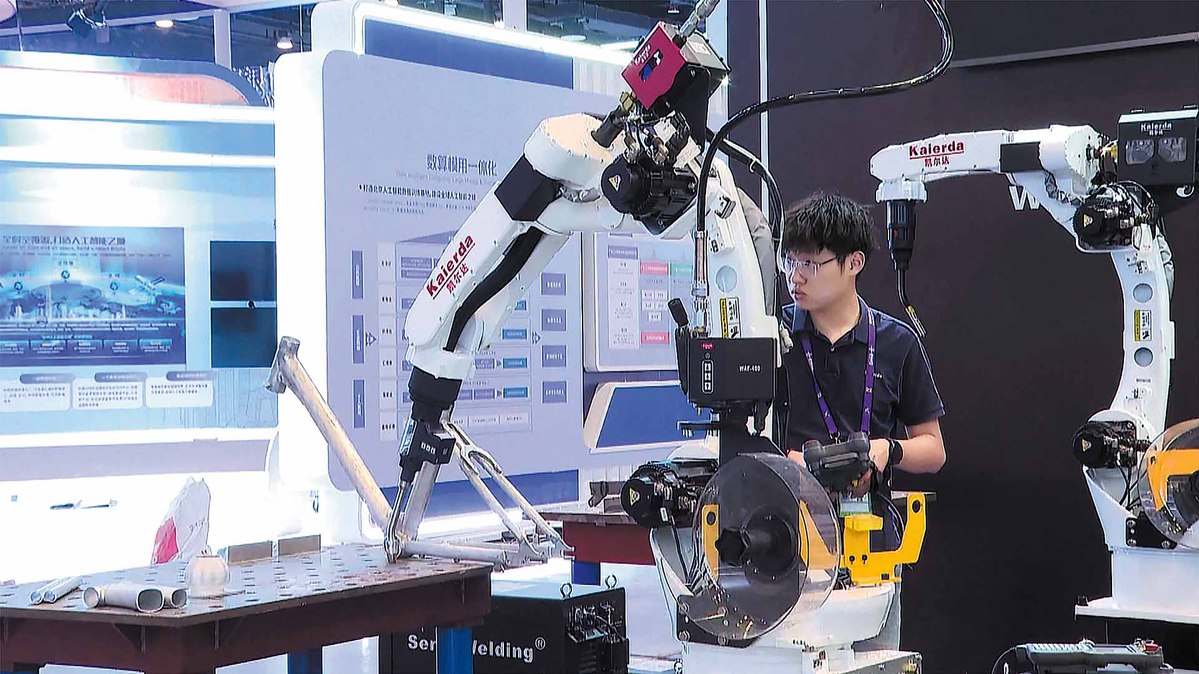Rosy future seen for biz ties with ASEAN
CAFTA 3.0 implementation to further boost trade, spur tech cooperation


Implementation of the Version 3.0 China-ASEAN Free Trade Area (CAFTA 3.0) in the near future and the evolving role of the China-ASEAN Expo will create favorable conditions for businesses across the region, said government officials and business leaders on Tuesday.
Speaking ahead of the 22nd China-ASEAN Expo in Nanning, South China's Guangxi Zhuang autonomous region, running from Wednesday to Sunday, they said the initiatives will boost trade in goods and services, spur digital innovation and foster sustainable growth between China and the Association of Southeast Asian Nations.
With China and ASEAN advancing their respective domestic ratification procedures to push for the formal signing of CAFTA 3.0 by the end of this year, Pov Somnang, special assistant to the ASEAN Secretary-General, said economic ties between China and ASEAN are set to not only expand in scale but also advance in quality.
Pov said this upgraded free trade deal will cut tariffs on goods, broaden market access for trade in services and align rules on intellectual property, environmental standards and digital trade, therefore fostering a more stable and open environment for businesses on both sides.
ASEAN and China should capitalize on emerging opportunities such as artificial intelligence, place greater emphasis on industrial realities and market demand, actively remove barriers to cooperation, and continuously reinforce the resilience and stability of regional industrial and supply chains, he added.
As cooperation between ASEAN and China in AI and the digital economy has shown multiple breakthroughs and vast potential, a new 10,000-square-meter AI pavilion is established for the first time in the history of the China-ASEAN Expo, featuring the participation of nearly 200 technology companies, including Huawei, Alibaba Cloud and iFlytek.
Amid shared challenges, including slowing global economic growth and unilateral tariff measures adopted by the United States, Lyu Daliang, director of the General Administration of Customs' department of statistics and analysis, said it is necessary for China and ASEAN to further broaden areas of cooperation, advance the deep integration of regional industrial and supply chains, and promote economic integration.
China's cooperation with ASEAN in the manufacturing sector has grown increasingly close, driving rapid growth in imports and exports of related products, said Lyu.
In the first eight months of this year, manufactured products accounted for more than 90 percent of China's trade with ASEAN, data from the GAC showed.
Meanwhile, China's exports of machine tools and auto parts to ASEAN rose 56.1 percent and 22 percent year-on-year, while imports of computer components and printed circuits from ASEAN grew 47.4 percent and 22.2 percent, respectively.
Rick Zhang, senior vice-president at DHL Express China, said that China-ASEAN economic and trade cooperation holds great potential. The integration of digital trade, cross-border e-commerce and digital payment systems will serve as a major growth driver for regional cooperation.
At the same time, collaboration in renewable energy, electric vehicles and sustainable infrastructure offers substantial opportunities, while the rise of the middle-income groups in both China and ASEAN is creating a powerful internal consumer market, said Zhang.
Eager to gain more market share in the coming years, the German logistics service provider will leverage digital platforms, extensive networks and green solutions to enhance logistics efficiency and boost seamless, sustainable trade between China and ASEAN markets.
Denis Depoux, global managing director of market consultancy Roland Berger, said that CAFTA 3.0 reflects a new paradigm of globalization, characterized by greater regionalization, more bilateral and multilateral trade and investment agreements, and the growing influence of the Global South.
Within the region, CAFTA 3.0 will create a predictable, rules-based environment for the next decade.
"For Chinese companies, this trade agreement secures access to some critical markets and resources, bolstering China's economic security and global competitiveness," said Depoux. "For ASEAN economies, it facilitates technology transfer, job creation in high-value sectors and inclusive development."
For the world, it signals to global businesses that China and ASEAN are committed to further integration and openness with predictability, making it a more attractive destination for global capital, he added.




































